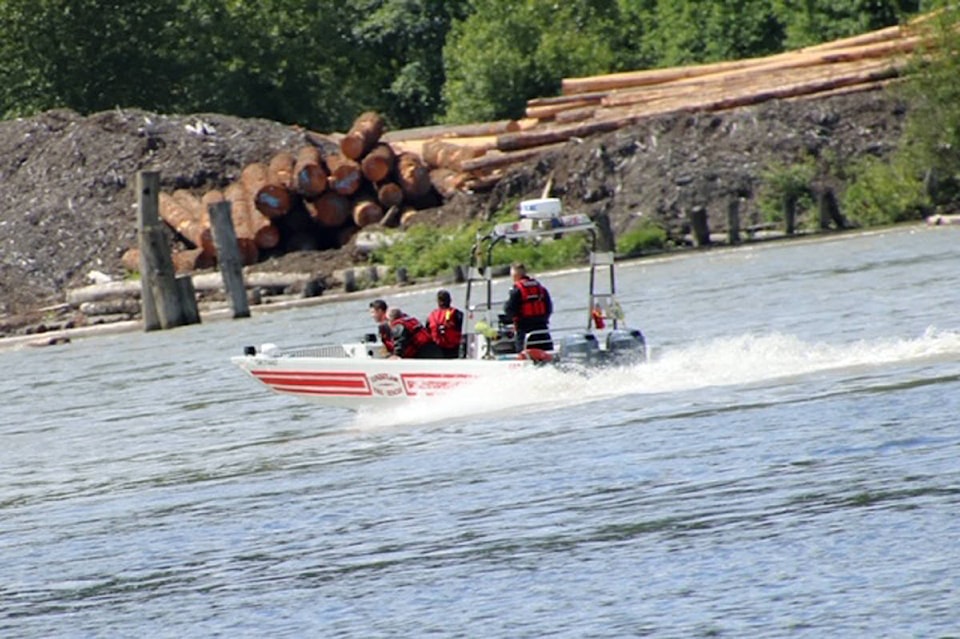The fate of the crew is still unknown according to a Transportation Safety Board of Canada investigation into a plane crash last year over the Fraser River between Maple Ridge and Langley.
On Jun. 6, a Cessna 172M aircraft operated by the International Flight Centre was conducting a local training flight from Boundary Bay Airport with a student and a flight instructor on board when it disappeared from radar.
The Transportation Safety Board, (TSB), has now concluded its investigation into the incident and released its final report on Thursday, Jan. 7.
The report revealed an aircraft left Boundary Bay Airport just before 1 p.m. and turned east-northeast as it climbed to an altitude of 2400 feet above sea level, (ASL).
Just after 1 p.m. the instructor contacted the tower controller at Pitt Meadows Airport for permission to enter the control zone for circuits but was turned down with a recommendation for pilot to try Langley Regional Airport instead.
When the pilot contacted Langley, they were cleared. That was the last communication the Langley tower controller heard from the aircraft.
At 1:09 p.m. the aircraft started to descend from 2200 feet ASL, and flew over the Fraser River near Fort Langley Water Aerodrome. It levelled briefly at 1500 ASL, 300 ASL and 200 ASL, going at a groundspeed of 80 knots, the equivalent of 148 km/h.
Then at around 1:13 p.m. the aircraft hit a power transmission line which was strung across the river – about 125 feet above the water – and went down.
READ MORE: Missing plane linked to reported plane crash in Fraser River between Langley and Maple Ridge
The first call to 911 was received at 1:19 p.m. from someone who reported seeing a low-flying aircraft and then a splash in the river. They also saw the aircraft partially submerged.
A witness at the time told RCMP Cpl. Chris Manseau they saw a small plane crash into the river. Later that same day Boundary Bay Airport advised that a small plane containing two people was overdue.
Cpl. Manseau confirmed the overdue plane was similar in size and colour to the one the witness saw crashing into the Fraser. He also confirmed the initial flight plan submitted by the pilot did not take the plane over the river where the crash was reported.
However, when emergency responders arrived on scene, the plane could no longer be seen.
Over the past several months the RCMP have used boats, helicopters, divers and underwater imaging equipment to try to locate the aircraft, but, the report said, the water level was high at the time of the incident which hampered the first few months of the search.
No remnants of the aircraft have ever been found, and the fate of the crew remains unknown, the report concluded.
“The investigation is still ongoing,” said Const. Julie Klaussner with the Ridge Meadows RCMP.
Klaussner confirmed there have been searches for the plane by outside agencies, with the last search occurring on Nov. 4, last year.
“That being said it was determined that due to conditions of the river, RCMP underwater recovery teams were not able to proceed back in June,” added Klaussner.
The B.C. Coroner’s Service has confirmed they have not been called to investigate at this time.
Lead investigator Dan Clarke has determined weather was not a factor in the crash.
The instructor in the plane was licensed with a Class 4 instructor rating, with 808 flight hours under their belt, and was being supervised by the flight training unit’s chief flight instructor at the time.
The student, who had accumulated around 80 flight hours at a flight training unit in the United States, only began training in Canada in February, 2020, and had gained an additional 10 flight hours at the time of the crash.
READ MORE: Search for plane in Fraser River continues five days after crash
While the aircraft was not equipped with a flight data or cockpit voice recorder, nor was it required to be by regulation, the report stated it was equipped with an emergency locator transmitter, but no signal was detected.
The power transmission lines are owned by B.C. Hydro. Since 2015 there has been a recurring NOTAM, or alert for pilots advising of a potential hazard along a flight path, indicating the cable crossing was unmarked.
However, the TSB investigation, could not determine if the flight instructor or student were aware of the alert or if they were aware the power transmission lines were indicated on the navigational chart.
B.C. Hydro has, according to the report, “prioritized the schedule for the commissioning of the daytime strobe lights”, which are anticipated to be completed later this year.
“Low-altitude flight always presents higher risk. Not all hazards, such as power transmission lines, are physically marked or can be seen in time to avoid collision,” the report finished.
The TSB is an independent agency that investigates air, marine, pipeline, and rail transportation occurrences. Its sole aim with this report was to advance transportation safety – not to assign fault or determine civil or criminal liability.
newsroom@mapleridgenews.com
Like us on Facebook and follow us on Twitter



